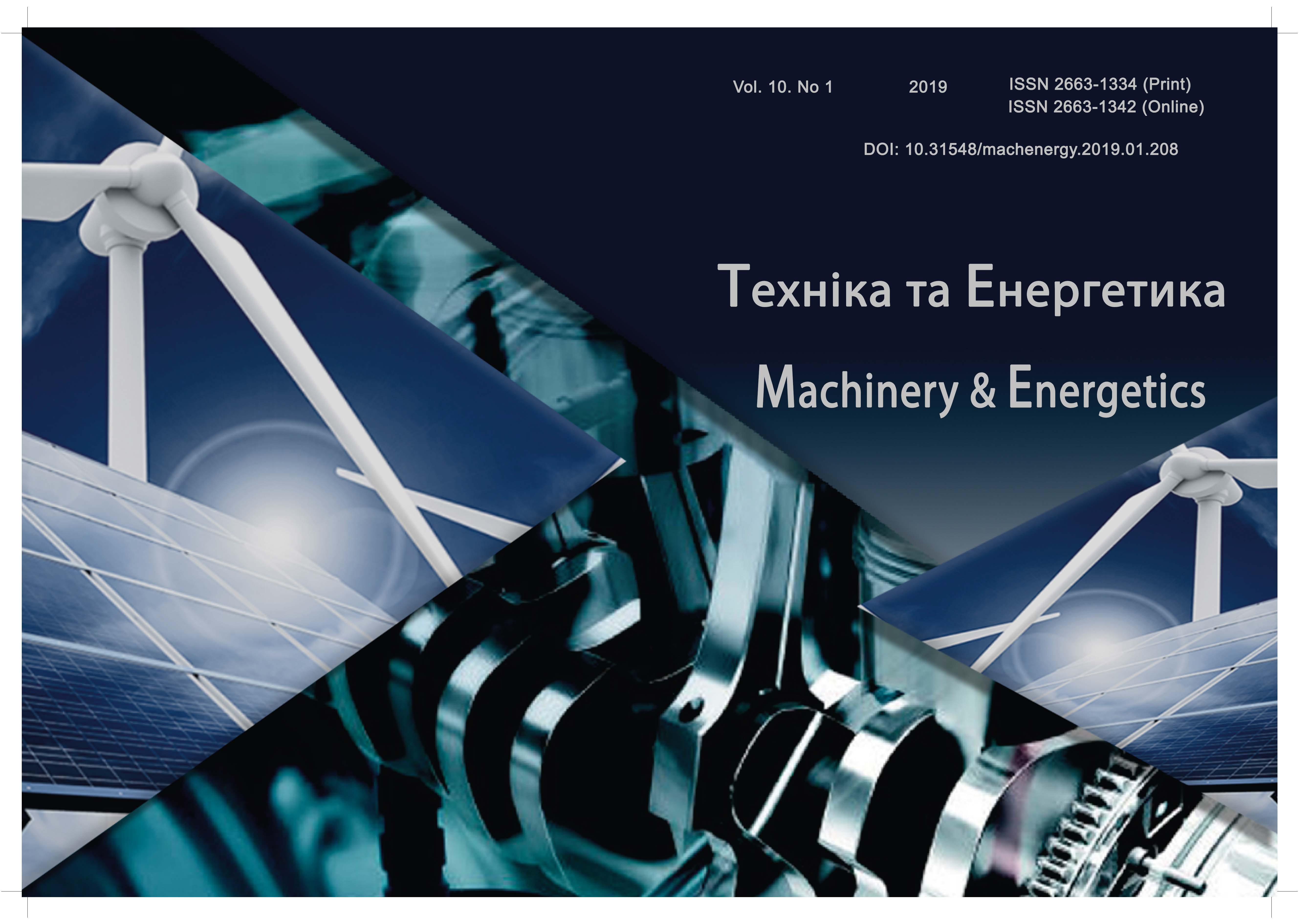Determination of rolling radius of pneumatic wheels
DOI:
https://doi.org/10.31548/machenergy2019.01.113Keywords:
rolling wheel radius, wheel deformation, air pressure in the tire, wheel contact area with bearing surface.Abstract
The obtained results allow calculating the actual rolling radius of the wheel of the drive wheels of self-propelled machines in accordance with the air pressure in the tires and the parameters of interaction with the support surface.
On the basis of the developed model for determining the initial radius of the wheel and the length of the contact zone of the wheel with the support surface, the dependence for determining the actual radius of the wheel rolling was obtained.
The studies have confirmed an increase in the actual rolling radius and a decrease an increase in air pressure in the tires. For example, for the rear wheel of a tractor John Deere 7130 with an increase in pressure from 0.6 to 2.6 atm, an increase in the rolling radius by 21 mm were observed. For the front wheel, when the pressure changed from 1 to 2 atm, the rolling radius increased by 7 mm The index of determination of calculated and experimental values of the real rolling radius is η2 = 0,98 for the front and η2 = 0.99 for the rear wheels, which indicates the adequacy of the calculated dependences.
References
Bekker M. G. Theory of land locomotion. The mechanics of vehicle mobility. Ann Arbor: The Univ. Michigan Press. 1956. 522 p.
J.P. Gray, V.V. Vantsevich, J. Paldan Agile tire slippage dynamics for radical enhancement of vehicle mobility. Journal of Terramechanics. 2016. Vol. 65. P. 14-37.
https://doi.org/10.1016/j.jterra.2016.01.002
S. Upadhyaya, W Chancellor, D. Wulfsohn Sources of variability in traction data. Journal of terramechanics. 1988. Vol. 25. P. 249-272. https://doi.org/10.1016/0022-4898(88)90040-7
Kiss P. Rolling Radii of a Pneumatic Tyre on Deformable Soil. Biosystems Engineering. 2003. Vol. 85. P. 153-161.
https://doi.org/10.1016/S1537-5110(03)00043-6
H.A. Hamersma, T.R. Botha, Els. P. Schalk. The dynamic rolling radius of a pneumatic tyre on hard terrains. International Journal of Vehicle Systems Modelling and Testing. 2016. Vol 11, Issue 3. P. 234-251. https://doi.org/10.1504/IJVSMT.2016.080879
Jazar R. N. Vehicle dynamics: Theory and application. Springer. New York. 2017. 985 p. (doi.org/10.1007/978-3-319-53441-1).
Pauwelussen J.P., Dalhuijsen W., Merts M. Tyre dynamics, tyre as a vehicle component.Virtual Education in Rubber Technology (VERT). HAN University. 2007. http://laroverket.com/wp-content/uploads/2015/03/tyre_ as_ car_component.pdf
T. Wilson, M. Siero, C. Kopchick, V. Vantsevich Terrain Truck: Control of Wheel Rotational Velocities and Tire Slippages. SAE Technical Paper 2011-01-2157. 2011.
https://doi.org/10.4271/2011-01-2157
J. Ryan, D. Bevly Tire radius determination and pressure loss detection using GPS and vehicle stability control sensors. IFAC Proceedings. 2012. Vol 8., Issue 1. P. 1203-1208.
https://doi.org/10.3182/20120829-3-MX-2028.00090
N.K. M'Sirdi, A. Rabhi, L. Fridman, J. Davila, Y. Delanne Second order sliding-mode observer for estimation of vehicle dynamic parameters. Vehicle Design. 2008. Vol. 48. P. 190-207.
https://doi.org/10.1504/IJVD.2008.022576
С. El. Tannoury, C. Plestan, F. Moussaoui, N. Romani Tyre effective radius and vehicle velocity estimation: A variable structure observer solution. International Multi-Conference on Systems, Signals and Devices 2011. P. 1-6.
Downloads
Published
Issue
Section
License
Relationship between right holders and users shall be governed by the terms of the license Creative Commons Attribution – non-commercial – Distribution On Same Conditions 4.0 international (CC BY-NC-SA 4.0):https://creativecommons.org/licenses/by-nc-sa/4.0/deed.uk
Authors who publish with this journal agree to the following terms:
- Authors retain copyright and grant the journal right of first publication with the work simultaneously licensed under a Creative Commons Attribution License that allows others to share the work with an acknowledgement of the work's authorship and initial publication in this journal.
- Authors are able to enter into separate, additional contractual arrangements for the non-exclusive distribution of the journal's published version of the work (e.g., post it to an institutional repository or publish it in a book), with an acknowledgement of its initial publication in this journal.
- Authors are permitted and encouraged to post their work online (e.g., in institutional repositories or on their website) prior to and during the submission process, as it can lead to productive exchanges, as well as earlier and greater citation of published work (See The Effect of Open Access).

